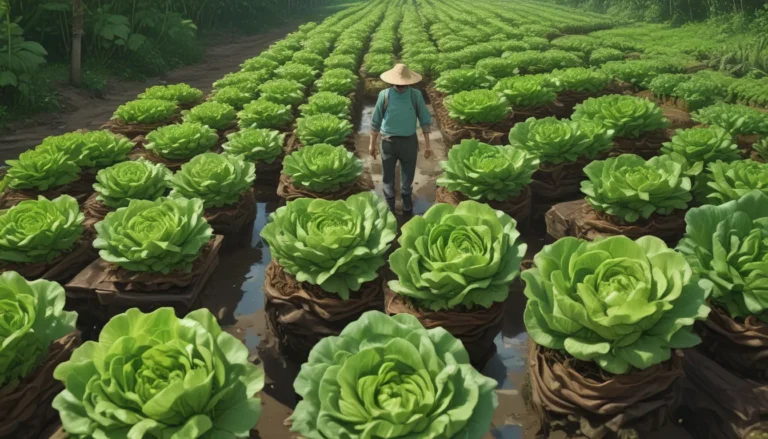A Guide to Growing Crookneck Squash

Are you ready to dive into the world of growing your own delicious summer vegetables? Crookneck squash is a fantastic choice for your garden, offering abundant yields and a rich, nutty flavor. Whether you’re a seasoned gardener or new to the hobby, this comprehensive guide will provide you with all the information you need to successfully plant, grow, and enjoy crookneck squash this season.
Introduction to Crookneck Squash
When it comes to gardening, few experiences are as rewarding as growing your own food. Crookneck squash, scientifically known as Cucurbita pepo, is a modern favorite with a rich history rooted in ancient agriculture. This versatile vegetable belongs to the same species as acorn squash, zucchini, and other popular varieties.
Crookneck squash may have originated in New Jersey and has been enjoyed by gardeners for generations. With various hybrid and heirloom cultivars available, you have plenty of options to choose from to suit your growing conditions and preferences.
Planting Your Crookneck Squash
Propagation
To grow crookneck squash, you can either start from seeds or purchase transplants from a nursery. Sow the seeds directly in the garden after the danger of frost has passed, ensuring the soil is warm and moist. Alternatively, start seeds indoors and transplant them once they’ve developed into healthy seedlings.
When planting transplants, choose a location with full sun exposure and fertile, well-draining soil. Keep the plants properly spaced to promote healthy growth and prevent the spread of diseases. Consider using containers if you have limited space, ensuring the pots are large enough to accommodate the vigorous growth of crookneck squash.
Growing Tips for Success
- Plant in full sun and provide protection from strong winds.
- Keep the soil moist but not waterlogged during the germination and seedling stages.
- Mulch around the plants to retain moisture and suppress weeds.
- Fertilize the plants regularly, especially if grown in containers or raised beds.
Selecting the Right Cultivar
When choosing a crookneck squash cultivar, consider factors such as your growing conditions, climate, and personal preferences. Popular varieties like ‘Golden Goose,’ ‘Golden Summer,’ and ‘Pic-N-Pic’ offer high yields, disease resistance, and excellent flavor profiles. Look for hybrid selections with improved traits or classic heirlooms for a touch of nostalgia in your garden.
Managing Pests and Disease
Despite their prolific growth, crookneck squash plants are susceptible to pests and diseases that can affect their yield and overall health. Common pests like aphids, cucumber beetles, and squash bugs can damage the plants if left unchecked. Implement preventive strategies such as crop rotation, companion planting, and regular monitoring to protect your squash from infestations and diseases.
Harvesting and Preserving Your Crop
Harvest your crookneck squash when they’re young and tender, typically between four to six inches in length. Overripe fruits can be tough and seedy, affecting their taste and texture. Use a sharp knife to cut the fruits from the plant, being careful not to damage the vines. Enjoy freshly harvested squash in various recipes or preserve them by pickling, dehydrating, or freezing for later use.
Recipe Ideas for Crookneck Squash
Crookneck squash is a versatile ingredient that can be used in a wide range of dishes, from sautés to casseroles, appetizers, and salads. Experiment with different cooking methods and flavor combinations to create delicious meals that showcase the rich and nutty flavor of this summer vegetable.
Whether you’re a novice gardener or an experienced enthusiast, growing crookneck squash can be a rewarding and enjoyable experience. With proper care and attention to detail, you can harvest a bountiful crop of tender, flavorful squash to enjoy throughout the summer months. Have fun exploring the world of vegetable gardening and discovering the joys of growing your own food!
Quick Reference Growing Guide
- Plant Type: Annual vegetable
- Water Needs: Moderate
- Hardiness (USDA Zone): 3-10
- Season: Summer
- Exposure: Full sun
- Time to Maturity: 40-60 days
- Spacing: 18 inches
- Height: 24-48 inches
- Spread: 18-48 inches
- Common Pests: Aphids, cucumber beetles, cutworms, squash bugs
- Common Diseases: Alternaria leaf blight, bacterial leaf spot, bacterial wilt, downy mildew, powdery mildew
Whether you’re a seasoned gardener or a novice enthusiast, growing crookneck squash can be a rewarding and fulfilling experience. With the right knowledge and techniques, you can cultivate a thriving crop of delicious summer vegetables to enjoy with your family and friends. Explore the world of vegetable gardening and discover the joys of growing your own food right in your backyard!





